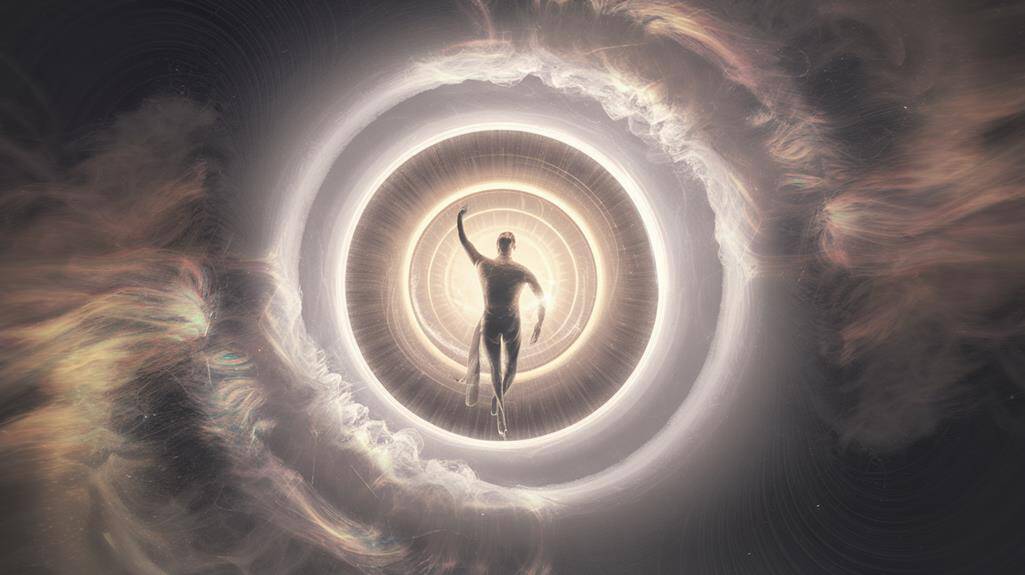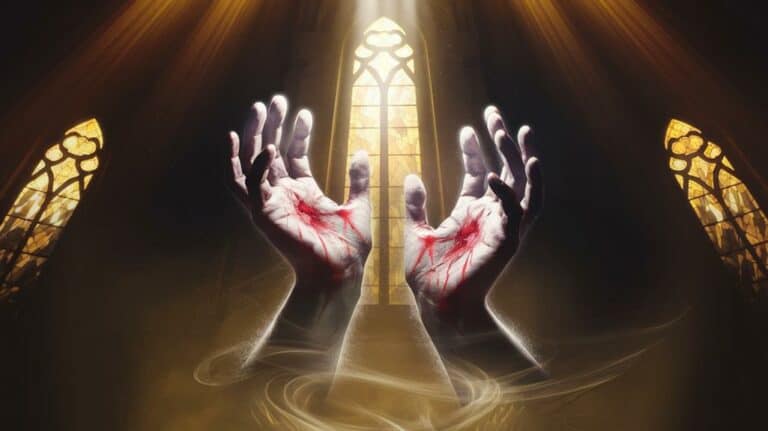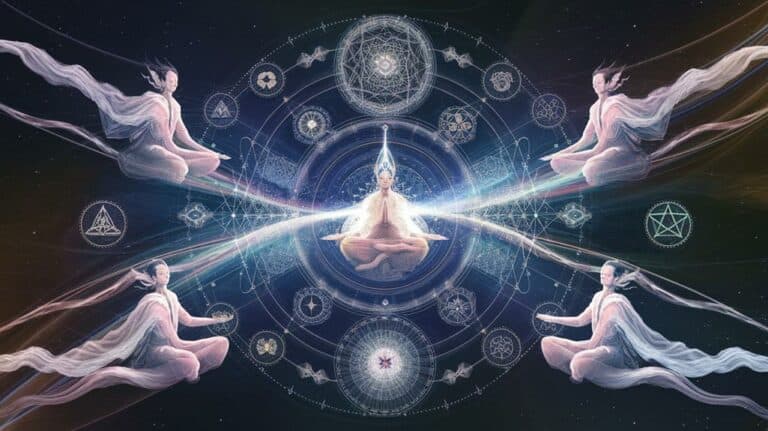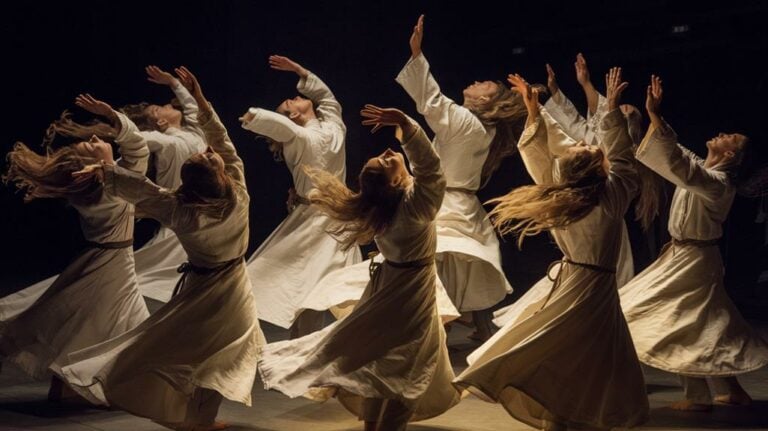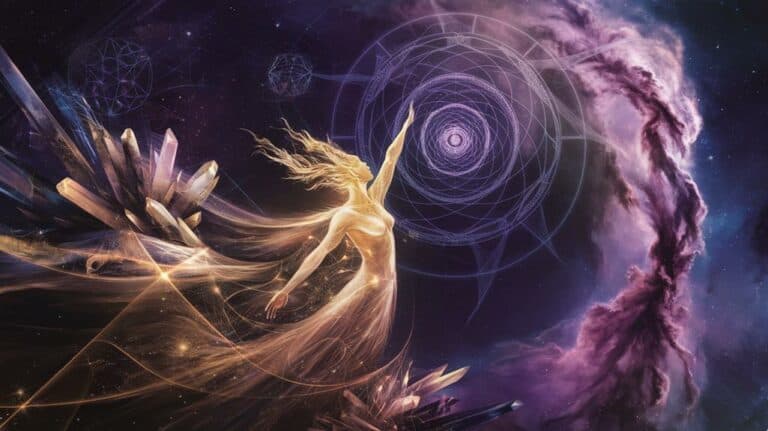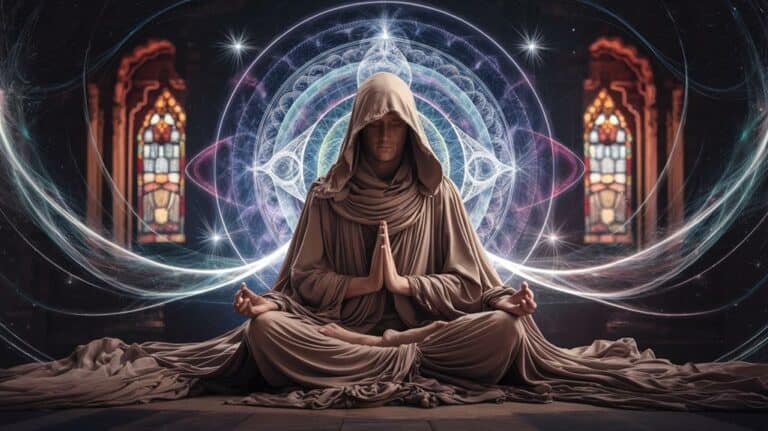Near-Death Experiences and Their Relationship to Mysticism
You’ve likely heard accounts of people who’ve come back from the brink of death with extraordinary tales to tell. These near-death experiences often mirror the profound insights described by mystics throughout history, featuring encounters with divine light, overwhelming peace, and transformative visions. While skeptics might dismiss these similarities as coincidental, the consistent patterns across cultures and time periods suggest something deeper at work. Whether you’re approaching this topic from a spiritual or scientific perspective, the intersection of NDEs and mysticism raises compelling questions about consciousness, reality, and the nature of human existence that won’t let you rest until you’ve explored them further.
Common Elements of NDEs
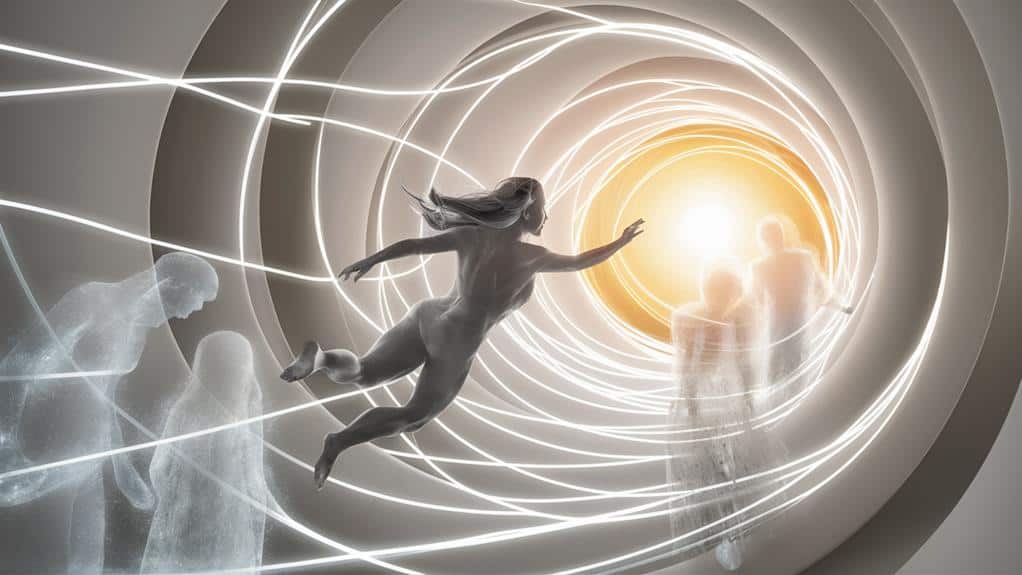
People who undergo near-death experiences (NDEs) often report remarkably similar elements, despite differences in their cultural, religious, or personal backgrounds.
You’ll find that these shared elements form a distinct pattern: an overwhelming sensation of peace, a separation from your physical body, and movement through what many describe as a tunnel toward an intensely bright light.
During these profound moments, you might encounter deceased loved ones or spiritual beings who guide you through this shifting space.
What’s particularly striking is how you’ll often experience a thorough life review, where you’ll see your entire existence flash before you – not just as memories, but as deeply felt moments where you’ll understand the impact of your actions on others.
You’ll likely feel an inexplicable sense of interconnectedness with all things, transcending ordinary consciousness.
Many report encountering a boundary or point of no return, where you’ll make a choice – or be told – to return to your physical form.
Upon returning, you’ll find yourself transformed, typically with reduced fear of death and a heightened appreciation for life’s deeper meaning.
Ancient Mystical Parallels
Throughout history, the core elements of near-death experiences mirror ancient mystical traditions across diverse cultures.
You’ll find striking parallels between modern NDEs and the sacred texts of Egyptian, Tibetan, and Native American spiritual teachings, where journeys through light, encounters with divine beings, and profound transformation of consciousness repeatedly emerge as central themes.
When you examine these ancient wisdom traditions, you’ll discover that mystics and shamans have long described experiences remarkably similar to contemporary NDE accounts.
The Tibetan Book of the Dead speaks of a clear light that you’ll encounter after death, while Egyptian hieroglyphs depict the soul’s journey through various domains of existence.
These aren’t mere coincidences – they’re part of humanity’s shared spiritual heritage that transcends time and culture.
You’ll notice how Native American vision quests often include elements that mirror modern NDEs: the sensation of leaving one’s body, moving through a tunnel, and receiving wisdom from spiritual guides.
These cross-cultural connections suggest that NDEs aren’t just modern phenomena but rather tap into fundamental aspects of human consciousness that our ancestors understood through their mystical traditions.
Cross-Cultural Sacred Encounters
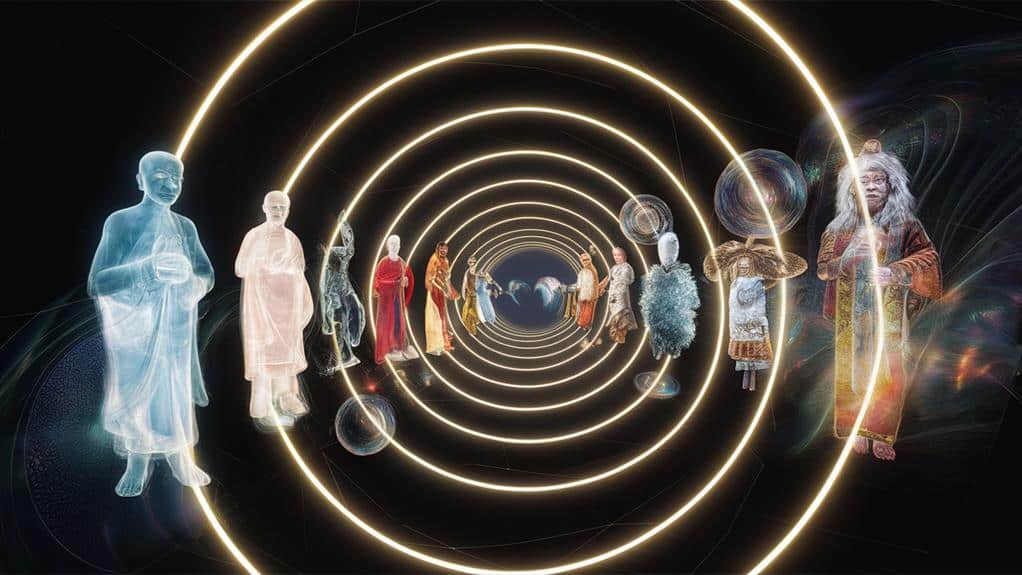
Sacred encounters during near-death experiences share remarkable consistencies across different cultures, yet each culture interprets these encounters through its unique spiritual lens.
You’ll find that whether you’re exploring accounts from Buddhist monasteries in Tibet or indigenous communities in the Amazon, the core elements remain strikingly similar – encounters with beings of light, feelings of unconditional love, and journeys through transcendent domains.
What’s fascinating is how you’ll notice these universal elements being filtered through distinct cultural frameworks. In the West, you might hear descriptions of meetings with Jesus or angels, while in Hindu contexts, you’ll encounter narratives of conversations with Krishna or Brahman.
The Japanese might describe encounters with Amida Buddha, while Native Americans often report meetings with ancestral spirit guides.
You’re witnessing how the ineffable becomes effable through cultural translation, yet the underlying truth remains constant. These cross-cultural patterns suggest you’re glimpsing something beyond mere cultural conditioning – perhaps a shared spiritual reality that transcends geographical and temporal boundaries.
When you examine these accounts closely, you’ll discover that despite surface differences, they’re pointing toward a unified human experience of the divine.
Scientific Research and Spiritual Implications
While scientific research into near-death experiences has grown considerably since the 1970s, the challenge of reconciling empirical data with spiritual interpretations remains complex.
You’ll find that researchers have documented consistent patterns in NDEs – the tunnel of light, out-of-body experiences, and encounters with deceased loved ones – yet these phenomena resist purely materialistic explanations.
When you examine the scientific evidence, you’ll discover that NDE survivors often report verifiable details about their resuscitations that they couldn’t have known while clinically dead.
Brain imaging studies have revealed distinct patterns of neural activity during these experiences, yet they don’t fully explain the profound transformations many survivors undergo.
You’re faced with compelling questions about consciousness existing beyond physical brain function.
The implications challenge your understanding of both science and spirituality.
You’ll notice how NDEs bridge the gap between objective research and subjective spiritual experience, suggesting that consciousness might transcend our current scientific frameworks.
These experiences invite you to reflect that perhaps the boundaries between physical and spiritual domains aren’t as definitive as you’ve been led to believe, opening new pathways for understanding human consciousness and its potential continuation beyond bodily death.
Life-Changing Effects and Transformations
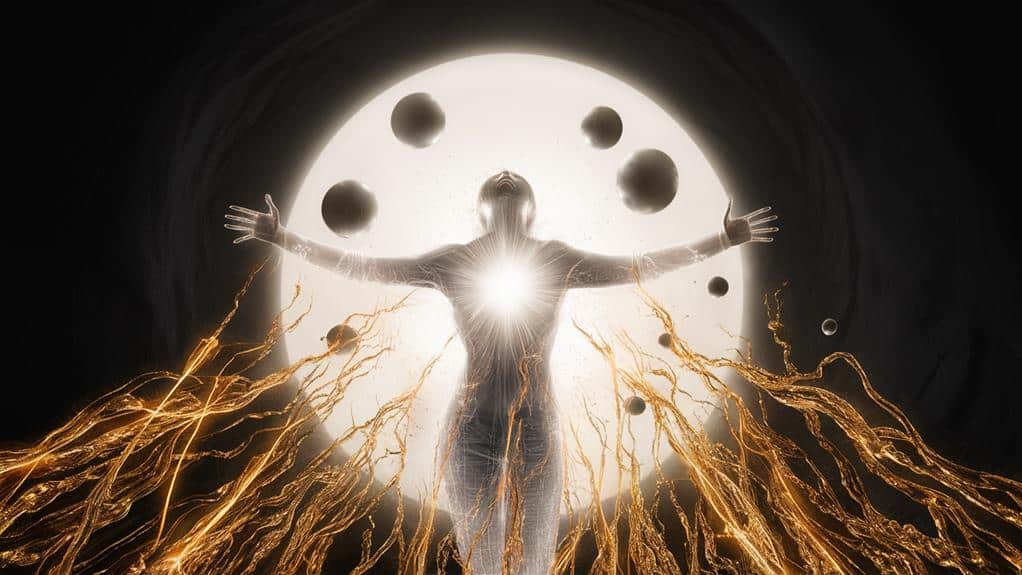
People who survive near-death experiences often report profound and lasting transformations that reshape their entire worldview.
You’ll find that these individuals frequently describe a diminished fear of death, coupled with a deepened appreciation for life’s inherent beauty and meaning. Their priorities shift dramatically, moving away from material pursuits toward more spiritually enriching endeavors and authentic connections with others.
When you examine the patterns of transformation, you’ll notice that survivors often develop enhanced empathy and a compelling desire to serve others.
They’re more likely to pursue meaningful work that aligns with their newly discovered sense of purpose, and you’ll see them embracing a more inclusive understanding of human consciousness and existence.
Their relationships tend to deepen as they shed superficial concerns and focus on genuine emotional bonds.
You’ll discover that these transformative effects aren’t temporary – they typically last throughout the person’s lifetime.
The experience becomes a catalyst for profound personal growth, leading to increased psychological well-being and a more nuanced understanding of reality’s complex nature.
Many survivors report feeling more connected to a universal consciousness, fundamentally altering how they perceive their place in the cosmos.



